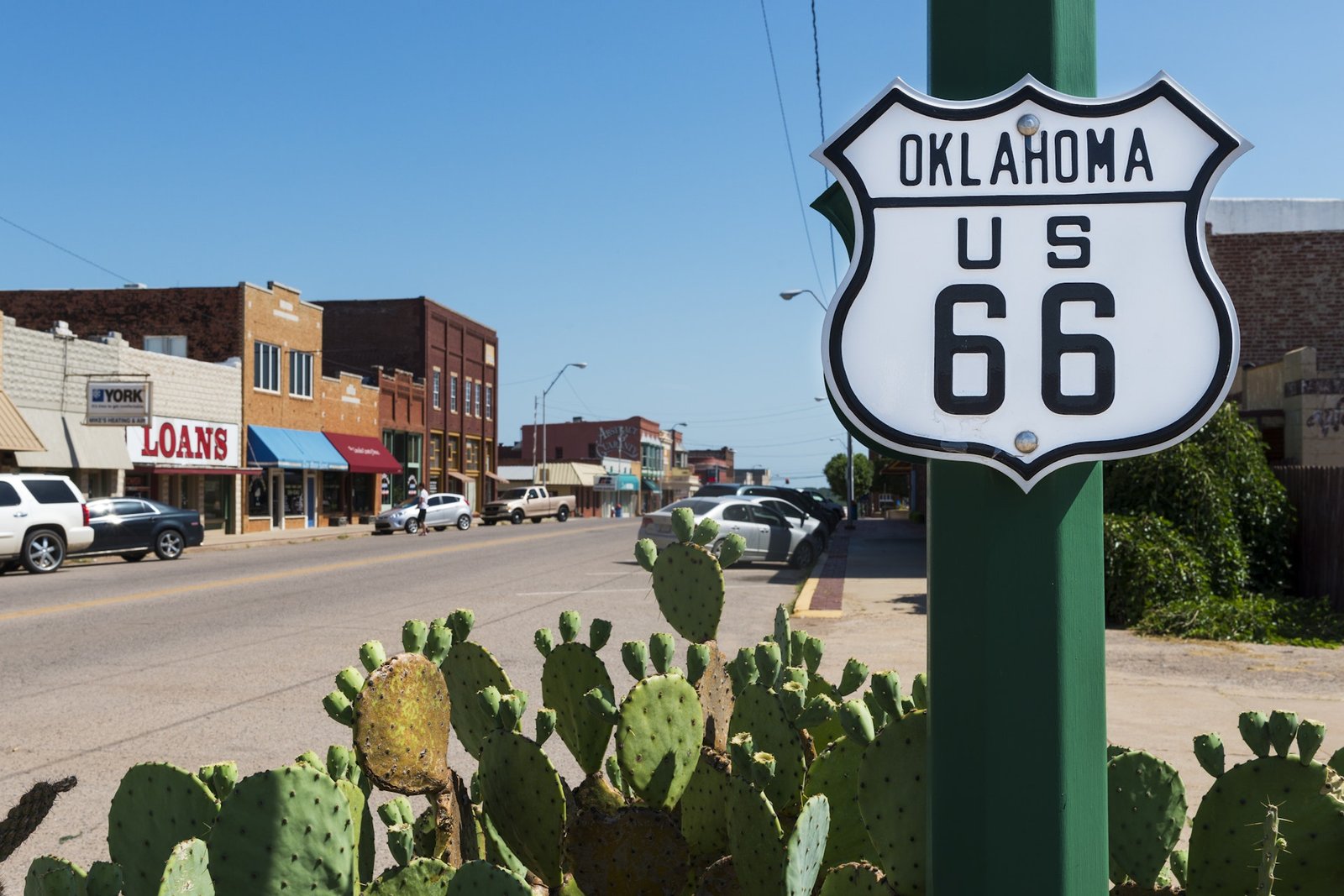Route 66 is getting a bike-friendly upgrade
Motorists are no longer the only ones who can get their kicks on Route 66.
Bike lanes have made sections of the “Mother Road” safe for cycling in recent years – and thanks to a $1 million grant from the US government, the path for pedalers is about to get better.
According to the US Department of Transportation’s Federal Highway Administration (FHWA), the money will help improve safety along 1.3 miles of Route 66 as it runs through Oklahoma by adding a turn lane and 8ft shoulders to the road. The project is one of 33 grants recently awarded to roadways within the National Scenic Byways Program.
Get trusted guidance to the world’s most breathtaking experiences delivered to your inbox weekly with our email newsletter.
“FHWA is proud to award these grants that will help make travel safer, provide more enjoyable access, and support local businesses along scenic byways across the country,” said agency head Shailen Bhatt in a press release.
The Oklahoma grant is part of a green rebirth for Route 66. Thanks to an increasing number of bike lanes, it’s easier than ever to ride parts of the historic highway without burning fossil fuels – a new chapter for a road built for cars with internal-combustion engines.
Historic Route 66 meets the Pacific Ocean at the Santa Monica Pier © RAW-films / Shutterstock
The history behind the highway
Linking Chicago and Los Angeles, Route 66 became a 2400-mile-long symbol of America’s automotive era after opening in 1926. In the 1930s, Midwestern migrants headed west on the route to escape the Dust Bowl; in the 1950s, middle-class families hit the highway in search of adventure. The continent-spanning road became synonymous with the romance of a cross-country road trip, mythologized in John Steinbeck’s The Grapes of Wrath and in song by Nat King Cole.
But after the National Interstate and Defense Highways Act of 1956 launched the Interstate Highway System, which created faster routes for drivers and replaced sections of Route 66, the path lost its appeal, ultimately getting officially decommissioned in 1985.
Today, the route’s remnants slice through scenic sections of the USA, providing a nostalgic cross-section of American kitsch (think the largest ketchup bottle in the world) while rolling through prairie fields and painted rocks toward the Pacific Ocean.
Cyclists can now explore the small towns and roadside motels that lie along Route 66 © TLF Images / Shutterstock
Cycling on Route 66
US Bike Route 66 (USBR 66), part of the US Bicycle Route System’s 18,000-mile-plus cycling network, parallels a portion of the fabled strip on bike paths, county roads and highways.
The first completed section opened in 2018, connecting Kansas’ rolling hills to Missouri’s Gateway Arch. California added nearly 330 miles to the route in 2021, and Oklahoma designated another 400 miles in 2022. Once complete, USBR 66 will span over 2000 miles, passing by many of the roadside motels and through tumbleweed towns that cars have zoomed past for nearly a century.
The 1.3-mile improvement in Oklahoma might seem minuscule considering the route’s long-term goal, yet it’s indicative of a green-energy wave slowly transforming contemporary travel. Cities from Portland to New York are attempting to make cycling safer and more accessible, goading citizens to turn off their gas guzzlers and run on pedal power. And if the US Bicycle Route System fulfills its vision, some 50,000 miles of biking trails will eventually connect the contiguous US states on emissions-free highways for pedal-happy travelers.
The Mother Road might have seemed outdated for drivers in the 1980s. Today, when it comes to sustainable road trips, it’s now the new frontier.












